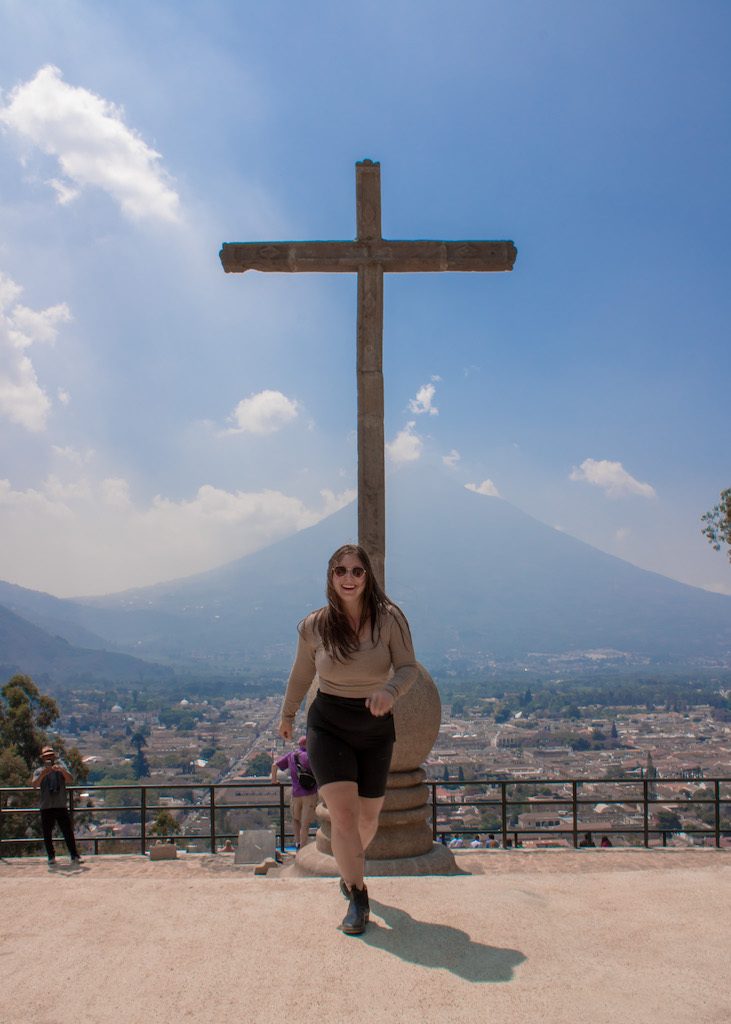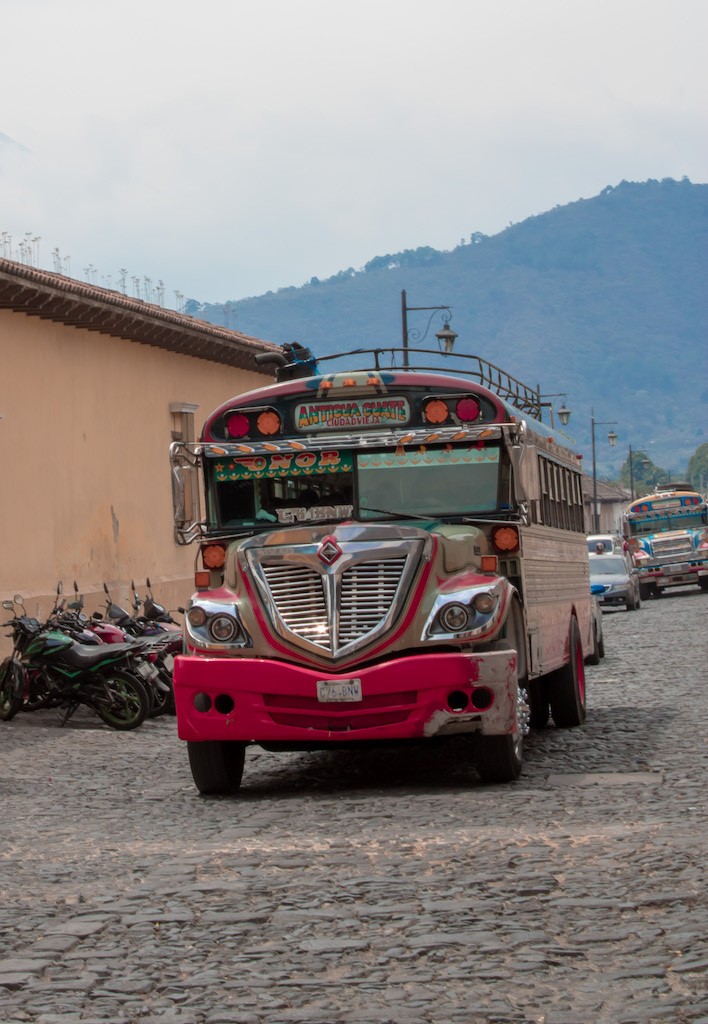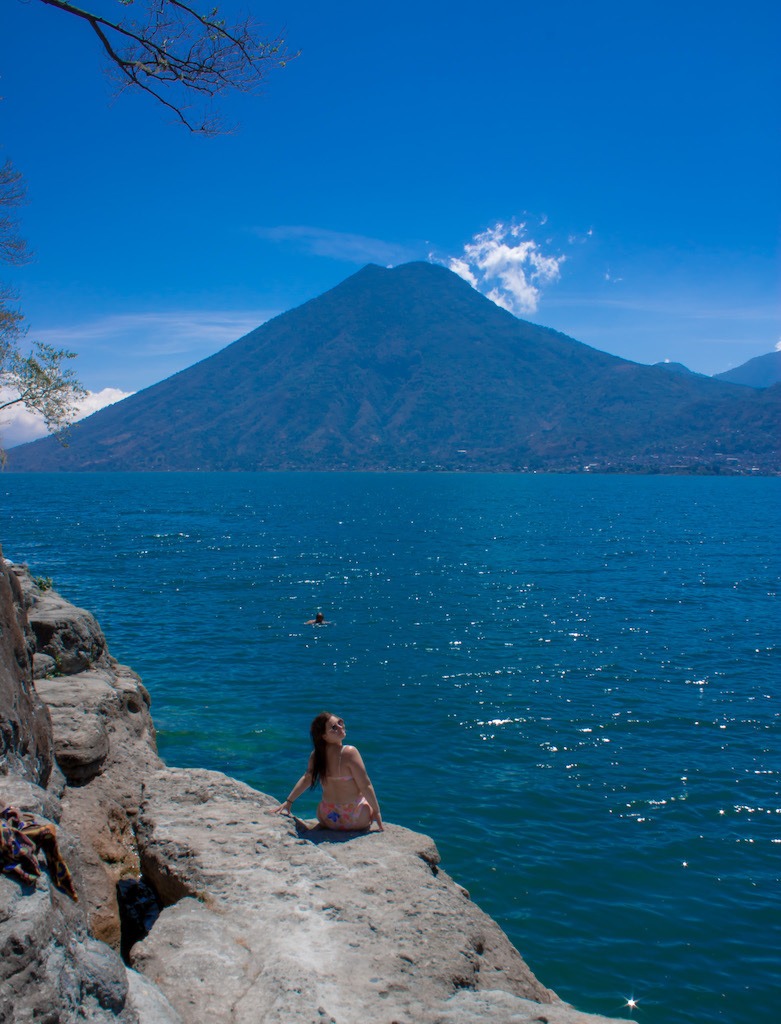After having visited it a few times, Guatemala became one of my favorite countries in Latin America, because of its rich culture, friendly atmosphere, and insane natural beauty. Being a super affordable destination, it’s quite popular among backpackers, and it’s easy to stretch your dollar far here.
That being said, Guatemala has a difficult historical past, which is where many present-day issues stem from. Many travelers avoid the country because of frequent reports of violent crime, natural disasters, and corruption. So, is Guatemala safe? And what about solo female travelers in particular?
Based on my own experience, these are the things to consider before going to Guatemala and some tips for staying safe once you arrive:
Things to Consider Before Traveling to Guatemala

Check the Guatemala Travel Advisory before going.
At the time of my last trip to Guatemala, there was a level 3 travel advisory for the country, which says to reconsider travel, specifically citing crime as the main reason. However, it also names specific areas of Guatemala that are deemed unsafe for travelers, none of which are particularly touristy.
These travel advisories are helpful because they tell you specific areas to avoid, so don’t leave for Guatemala without checking them first.
Although the “reconsider travel” suggestion was intended for the entirety of Guatemala, it isn’t to say that the entire country is dangerous. There were many other foreign travelers at both Lake Atitlán and Antigua, and I felt completely safe in those two areas, despite the advisory.
Know what areas you’ll be traveling to.
Guatemala isn’t a country where it’s particularly safe to book a one-way ticket with no plan. As I said above, there are specific areas that are under travel advisories because of violent crime and gang activity. You don’t want to end up in one of these areas, especially if you don’t have a plan about where to go and where to stay.
The most popular places to travel to in Guatemala are Lake Atitlán, Antigua, Semuc Champey, El Paredón, the Tikal ruins, and Flores, to name a few. Most of these have a strong tourism infrastructure and reliable transportation between them. However, if you love to travel off the beaten path, Guatemala isn’t a great place to do so unless you’re very familiar with the area.
Pick the right season.
Natural disasters are unfortunately very common in Guatemala, and the country doesn’t have very strong resources to aid people impacted. Take special precautions if you visit during the rainy season (June through August), as flash floods are common. Guatemala also experiences many earthquakes, which can happen at any time of year of course, but can be more devastating during the rainy season, when they can trigger mudslides.
Mudslides, landslides, and heavy rains can cause road closures and make getting around the country very difficult and potentially dangerous. This isn’t to say that it’s bad to visit Guatemala during the rainy season, but I would avoid it.
Practice caution if you’re crossing a land border.
Guatemala borders Mexico, El Salvador, Belize, and Honduras. If you’ll arrive in Guatemala by land, practice extra caution. I’ve crossed from Mexico to Guatemala at La Mesilla a handful of times and didn’t have any horrible experiences, though many travelers do. These land crossings have a decent amount of crime and numerous scams, and it’s best to get through them as quickly as possible. Don’t stick around in any of the border towns if you can help it, and never exchange your currency there.
How to Stay Safe in Guatemala

Only use bank ATMs.
You might see stand-alone ATMs around Guatemala, especially in bigger cities. Avoid them if possible, as it’s pretty common for thieves to hang around them and wait for an opportunity to rob distracted tourists. Always use ATMs inside banks. These are much safer, because there are security cameras, and many have doors that you can lock behind you. Some small villages, especially around Lake Atitlán, don’t have banks (some don’t even have ATMs). In this case, you’ll have to take a boat to a larger town (like Panajachel, San Pedro, or Santiago) where there are banks.
Plan your travel carefully.
I mentioned above that Guatemala isn’t a safe place for willy-nilly travel plans. Make sure you know which places you want to visit and how you’ll be traveling there before you arrive in the country. I wish I would have known this before the first time I visited, because I thought I could just wing it on public transportation like I always did in Mexico. I ended up getting lost in Huehuetenango (which is specifically on the advisory as a place you shouldn’t travel to), and thankfully a nice lady helped me find the bus I needed to take to where I was going.
You don’t need to have a strict itinerary or all of your accommodations booked, but at least have a route planned and make sure you know how you’ll be getting from place to place.
Opt for shuttles instead of public transportation…
That said, shuttles are your best friend in Guatemala. In every touristy place, you’ll find affordable shuttles to take you to other popular destinations throughout the country. I had great experiences traveling from Mexico to Guatemala and then between Antigua and Panajachel on shuttles. They were all comfortable, quick, and super cheap (if you choose a shared option).
I have also traveled through Guatemala on public transportation and had quite a wild adventure. Though I have some interesting stories about hopping from one “chicken bus” to the next, I would not recommend doing this, because they take much longer and I didn’t feel as safe on these. Guatemala is very mountainous, and the drivers on the chicken buses go quite fast around the curves. Not only was it a lot for my queasy stomach, but it felt like the bus could just roll down a cliff at every turn.
…but if you want to try a chicken bus, do a shorter trip.
If you definitely want to tick riding a chicken bus off your bucket list, though, do it. They’re very cheap, and you can take them between villages or within the same city for a much safer experience. I recommend doing this in Antigua, where you can catch one in the Mercado Municipal. The routes are written on the front windows of each bus; I recommend taking one from Antigua to San Antonio Aguascalientes, which is just a 15-minute ride. This way, you’ll have the fun experience of a tricked-out school bus without the imminent danger or car sickness.
If you rent a car, always have somewhere safe to park overnight.
I didn’t see a reason to rent a car in Guatemala, but if your travel plans require one, you do you. Keep in mind that carjackings are common throughout the country, and you don’t want to get slapped with a several-thousand-dollar bill from the rental agency if this happens to you. Make sure that all of your accommodations have safe parking, preferably including a guard. Most hotels do, though Airbnbs can be trickier, so always ask the host before booking.
Do not travel at night.
This applies to almost any country. Don’t travel at night in Guatemala, especially because there are common scams in which thieves block the road or pretend to be hurt in order to make cars stop, so they can rob them. Just avoid this by traveling in the daytime.
Learn some Spanish before arriving.
Although most locals who work in tourism speak great English, it’s helpful to know some Spanish before arriving in Guatemala, just in case. There were moments when I realized how much easier it is to travel here being a fluent Spanish speaker, although knowing a few basic phrases should be enough to get you by. Even being able to say, “Necesito ayuda” (I need help) can be a game-changer for your safety.
Guatemala is also a stellar place to learn Spanish, and there are language schools throughout the country. Foreigners particularly like learning here, because Guatemalans speak much more slowly and clearly than people from other Spanish-speaking countries.

Never leave your drinks unattended.
I know I sound like a broken record, especially for women reading this. You shouldn’t leave your drink unattended anywhere in the world, and it’s common in Guatemala for predators to spike drinks. I didn’t go to any clubs there, but I was warned by a guide that they’re full of men that prey on foreign women. It’s gross and made me not want to ever go to a club there anyway, but if you do, just make sure you put a napkin over your drink at all times, even if it’s in your hand, and never leave it unattended.
Avoid public demonstrations and protests.
In big cities, demonstrations and protests are fairly common and can turn violent quickly. If you see one happening, try to stay indoors until it’s over.
Always hike with a guide.
Guatemala is a fantastic place to hike, especially if you’re up for the adventure of climbing a volcano. Acatenango is the most famous, closely followed by Pacayá and Agua. Unfortunately, these hikes can be dangerous if you don’t have a guide with you. Many people without a guide on Pacayá and Agua Volcanoes have been robbed at gunpoint or knifepoint. You can avoid this by joining a guided tour or hiring a guide privately, as thieves are less likely to target groups.
Be aware of common scams.
There are a variety of scams in Guatemala, and some are more obvious than others to spot. One that I noticed everywhere was the fake charity, in which people approached me on the street asking if I would donate to an orphanage or some other organization that didn’t seem to exist. They usually hold a sign with pictures of children or sick people. There’s also a common scam where thieves dress like police officers, though I didn’t see this one in action.
Only take official taxis, Ubers, or tuk-tuks.
Never take an unofficial taxi in Guatemala. A few times I was offered a ride by someone in an unmarked car in Guatemala, so it appears to common, though it felt sketchy to me. I also don’t recommend hitchhiking. Uber is used in big cities and is actually much cheaper than taxis and tuk-tuks, though all three are safe options. When taking taxis or tuk-tuks, make sure you agree on a price before you get in the vehicle or else they might try to scam you.
Leave your flashy jewelry at home.
This is applicable in most places, but don’t wear expensive jewelry in Guatemala. It attracts unwanted attention and is just not worth it, in my opinion. I also recommend keeping your phone and electronics in your pocket or bag to avoid unwanted attention.
Don’t drink the tap water.
The tap water is not safe to drink in Guatemala. Ice is usually fine, though, since the water is boiled before making it at restaurants. If you have any doubts, just ask for your drinks without ice and avoid things like smoothies that have ice blended in.
Is Guatemala Safe? My Verdict:

If you stick to touristy areas (I know, I love offbeat locations just as much as the next gal) and follow these guidelines, I think Guatemala is much safer than the media portrays it to be. For instance, I generally feel much less safe in a place where there’s a lot of catcalling, and I’ve never once been catcalled in Guatemala.
That isn’t to say that it’s always 100% safe for any woman, and the experiences of local women are completely different than those of foreigners. Guatemala also has a very high rate of femicide and domestic violence. However unfortunate and heartbreaking that is, the violence is almost entirely exclusive to local women, and there are very sparse reports of female travelers experiencing it.
I can only speak to my experience, and I didn’t feel unsafe in Guatemala at any moment while traveling there. All of the Guatemalan people I met in the villages around Lake Atitlán and in Antigua were warm, hospitable, and kind. Due to that, they’re a big part of why I love traveling there so much.
***
Guatemala is a magical, beautiful place and not worth skipping out of fear of what you see in the media. As with any destination, there are specific safety precautions to keep in mind, and this list is solely based on my own experiences.
So, will your next adventure be to Guatemala?
Paolo says
The travel warnings are redicolus, and extremely exagerated, the flash floods are every 40 years or so if they happen, ive been here for 25 years and never seen a gang member, never ben mugged or had any problems and there are while retierement comunities of people from the US and Europe that live here and love it, like anywhre else dont go to the bad places there are fewer bad places than good ones, Im from NYC and i can tell you its safer here than there.
Emily says
The travel advisories are clear on which areas to avoid. I said in the article that where I visited felt quite safe to me, which is likely because I avoided those areas. No one country is a monolith when it comes to safety.